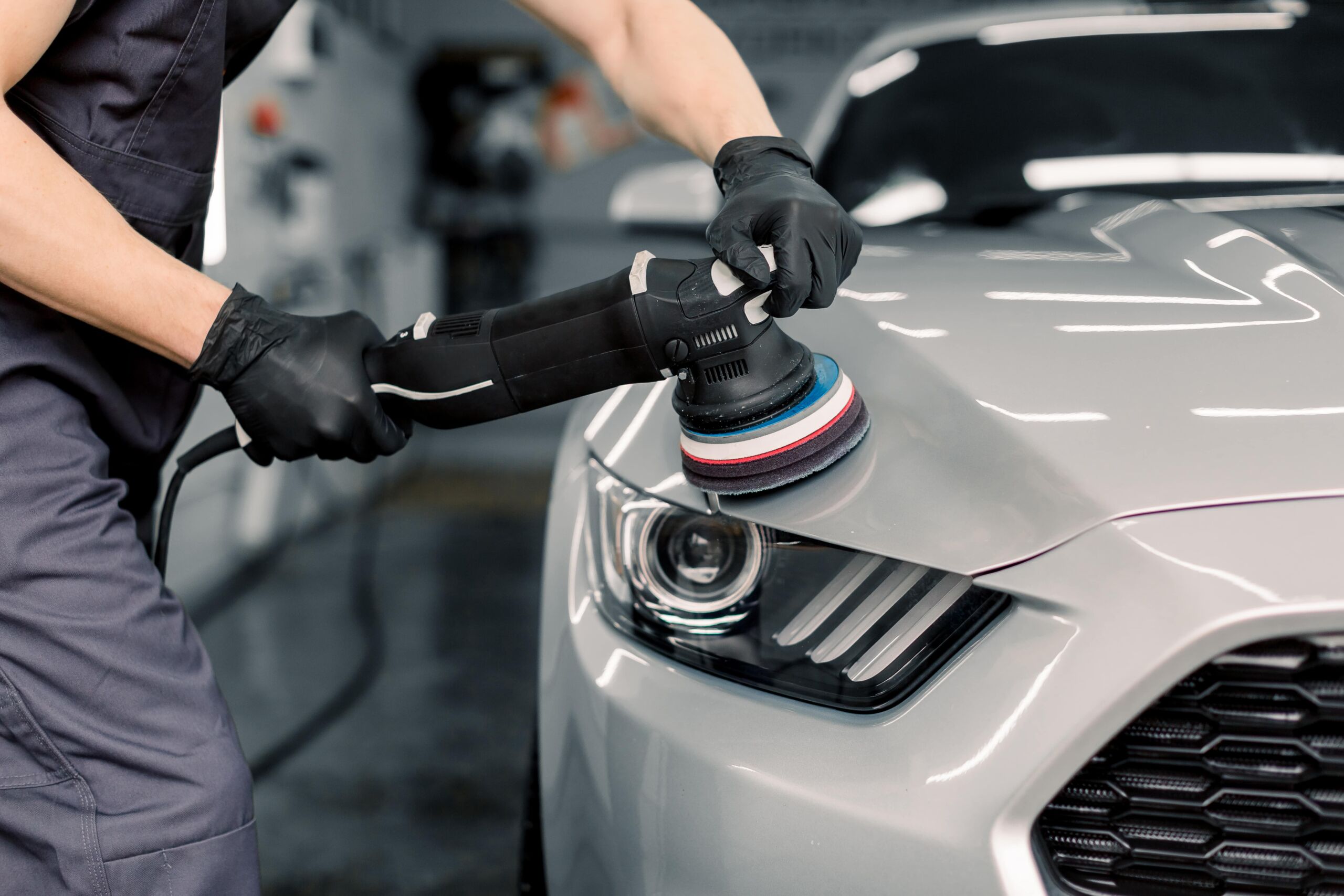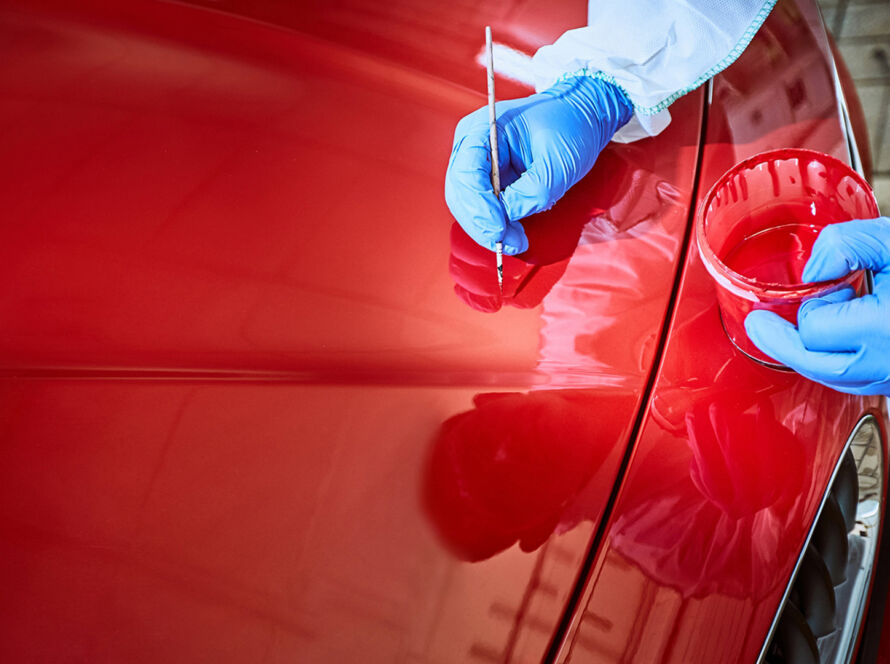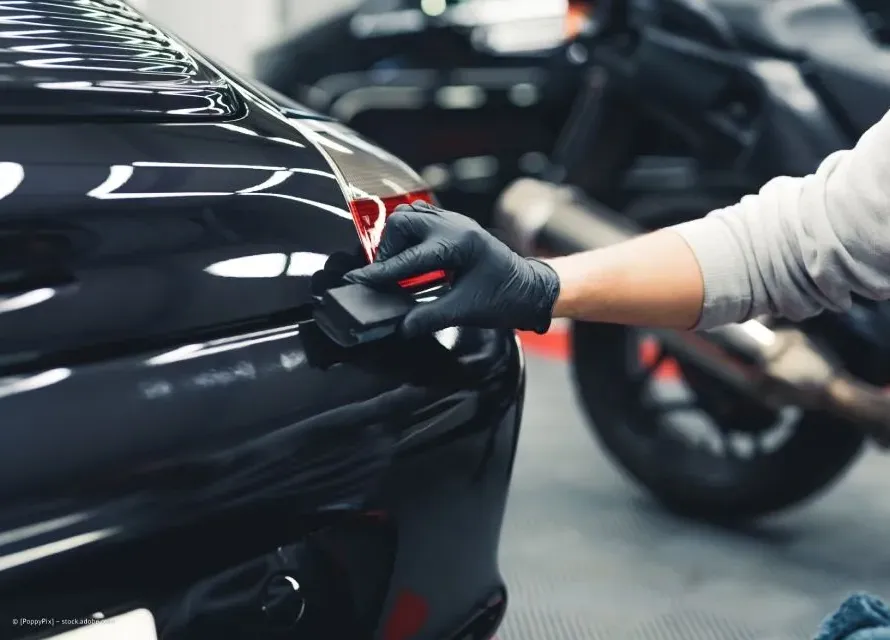What Is Paint Correction?
If you’ve ever washed your car and noticed fine scratches, swirl marks, or dull paint that never seems to shine, you’ve already seen the problems that paint correction is designed to fix. Paint correction is the professional process of removing imperfections from a vehicle’s clear coat using machine polishing and specialized compounds. The result is a deep, reflective finish that restores your paint to showroom condition.
Unlike a basic polish or wax, which can temporarily mask defects, true paint correction permanently removes them. According to industry surveys, up to 70% of vehicles develop visible swirl marks within the first year of ownership due to improper washing or dealership prep. Paint correction is the solution to reverse this damage.
How Paint Correction Works
The process of paint correction involves several stages:
- Decontamination – Removing dirt, iron particles, and tar that regular washes leave behind.
- Inspection – Using LED or halogen lights to spot swirl marks, oxidation, and scratches.
- Machine Polishing – Multi-stage compounding and polishing to level the clear coat safely.
- Finishing – Refining the paint to a high-gloss, defect-free surface.
Most professional corrections remove only a few microns of clear coat — less than the thickness of a human hair — making it a safe, controlled process when done properly.
Why Paint Correction Matters
- Restores Value: Cars with defect-free finishes command higher resale prices. A Kelley Blue Book study found that vehicles with excellent exterior condition can increase trade-in value by up to 10% compared to similar models in “fair” condition.
- Prepares for Protection: Correction ensures surfaces are ready for ceramic coatings or paint protection film, which need a flawless base to bond effectively.
- Improves Appearance: A swirl-free finish enhances color depth and gloss, making the car look better than new.
- Long-Term Benefits: Proper correction paired with protective coatings can keep a vehicle looking pristine for years.
Frequently Asked Questions (FAQ)
What is paint correction?
Paint correction is a detailing process that removes swirl marks, scratches, oxidation, and other imperfections from a vehicle’s clear coat using machine polishing and compounds. It restores depth, gloss, and clarity for a showroom finish.
How is paint correction different from polishing or waxing?
Polishing or waxing temporarily hides defects, while paint correction permanently removes them by carefully leveling the clear coat. Correction provides longer-lasting, higher-quality results.
Is paint correction safe for my car?
Yes. Professional paint correction is safe because only a microscopic layer of clear coat is removed. Done correctly, it improves paint quality without damaging the surface.
How long does paint correction last?
Paint correction results can last years if maintained with proper washing techniques and protective layers such as ceramic coating or paint sealants.
Does a new car need paint correction?
Yes. Many new cars arrive with swirl marks or dealership-induced scratches. Paint correction ensures a flawless base before applying long-term protection like ceramic coating.
How much does paint correction cost?
The cost depends on the vehicle size, condition, and correction stage required. On average, professional paint correction ranges from $300 to $1,000+ in the U.S.
How many stages of paint correction are there?
There are typically three levels: single-stage (light defects), two-stage (moderate defects), and multi-stage (severe imperfections). The right stage depends on paint condition.
Can paint correction remove all scratches?
Paint correction can remove light to moderate scratches and swirl marks. Deep scratches that penetrate past the clear coat usually require touch-up paint or respraying.
Should I apply ceramic coating after paint correction?
Yes. Ceramic coating locks in correction results, adds hydrophobic protection, and shields paint from UV rays, dirt, and water spots for long-term durability.
How do I maintain my car after paint correction?
Use pH-neutral car shampoo, the two-bucket wash method, and microfiber drying towels. Avoid automated brushes and consider ceramic coating to extend results.




